In 2023, our restoration team completed 108 projects across the Lake Simcoe watershed. From stormwater retrofits, Low Impact Development, to Community Action projects, creating wetland habitat and agricultural projects, we continue to make critical on the ground improvements.
Here are some of our favourite projects from 2023 and if you’re interested you can check out our Year in Review Video.
1. Currie Street Stormwater Management Facility Project
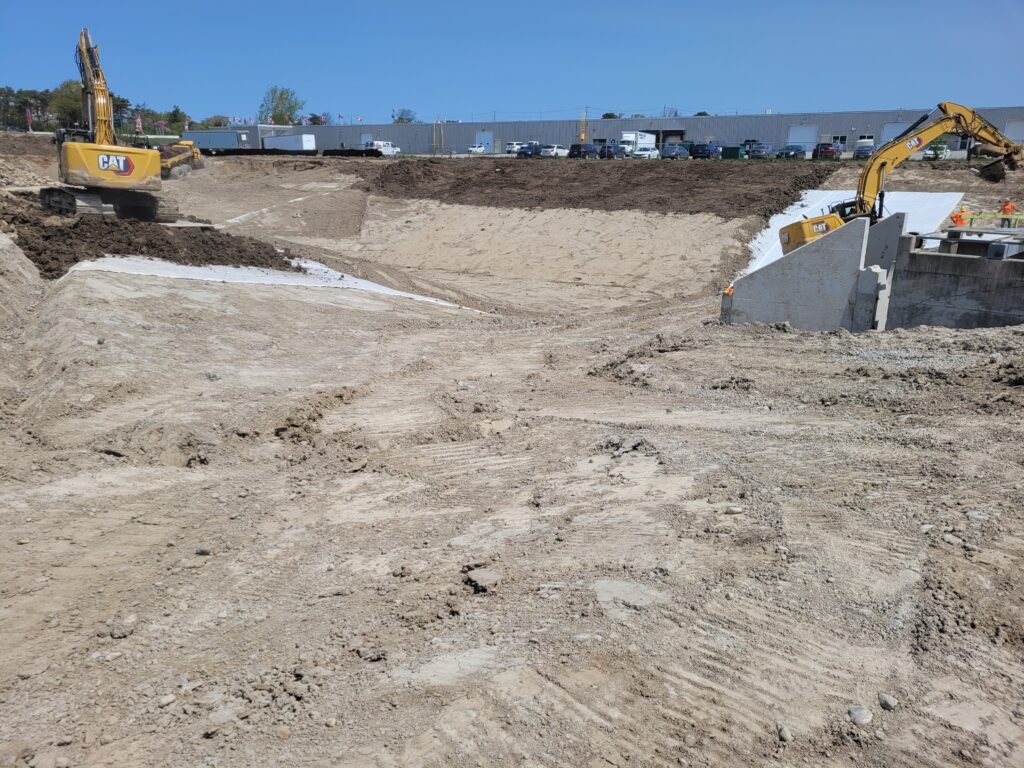
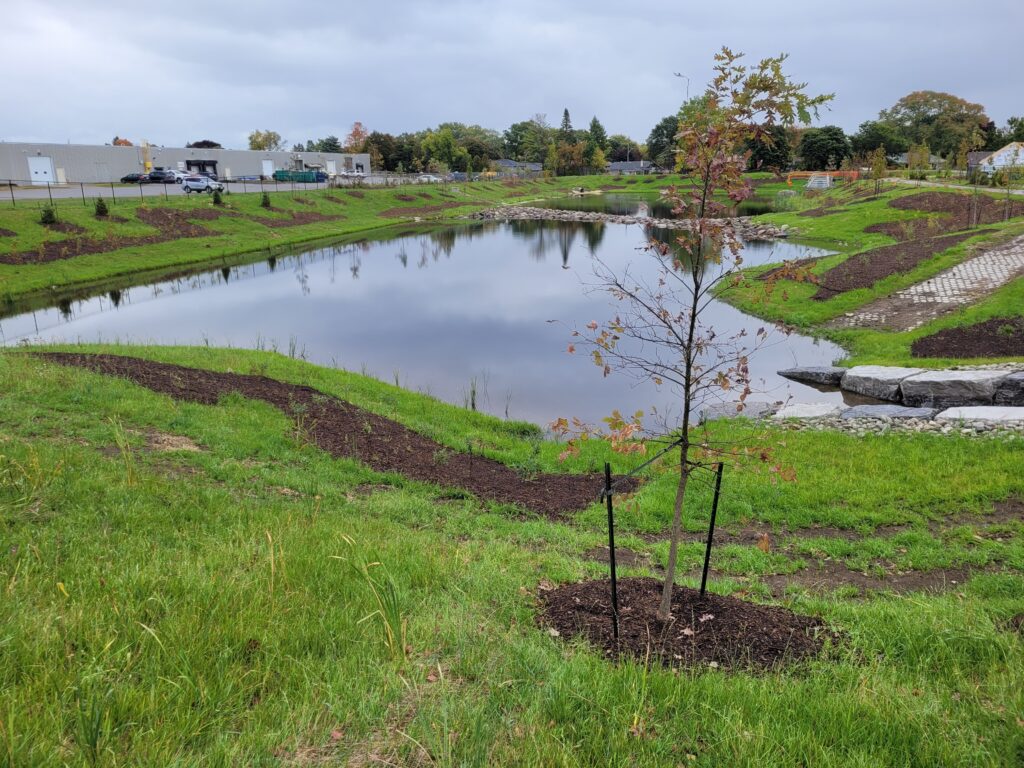
The Currie Street Stormwater Management Facility (SP03) is owned and maintained by the City of Barrie. This facility has a total catchment area of 81.92 hectares, and services predominantly residential stormwater runoff.
Prior to the implementation of this project, SP03 was a dry pond which was built to help control the quantity of stormwater that moved through this system but offered little benefit for water quality management. By upgrading the facility to a wet pond, the facility will not only improve the water quality leaving the facility (with an improved estimate of phosphorus reduction of 68.12 kilograms/year, compared to the previous dry pond with only 10.81 kilograms/year), but reduce the stress on the local stormwater infrastructure.
In addition to the facility improvements, Sophia creek has been improved and extended through 73 metres stretch, and an Oil Grit Separator (OGS) unit has been installed to ensure the adjacent commercial/industrial properties stormwater runoff is being cleaned effectively.
By implementing these improvements, the entire project will reduce the particulate phosphorus entering Lake Simcoe by approximately 57.36 kilograms each year. In addition, there were 141 trees, 894 shrubs and 650 shallow water plants planted, along native meadow seed mixes spread throughout the site.
The Conservation Authority provided this project some in-kind staff time, as well as funding through the Lake Simcoe Phosphorus Offsetting and the Restoration Assistance Programs.
2. Scanlon Creek Restoration Project
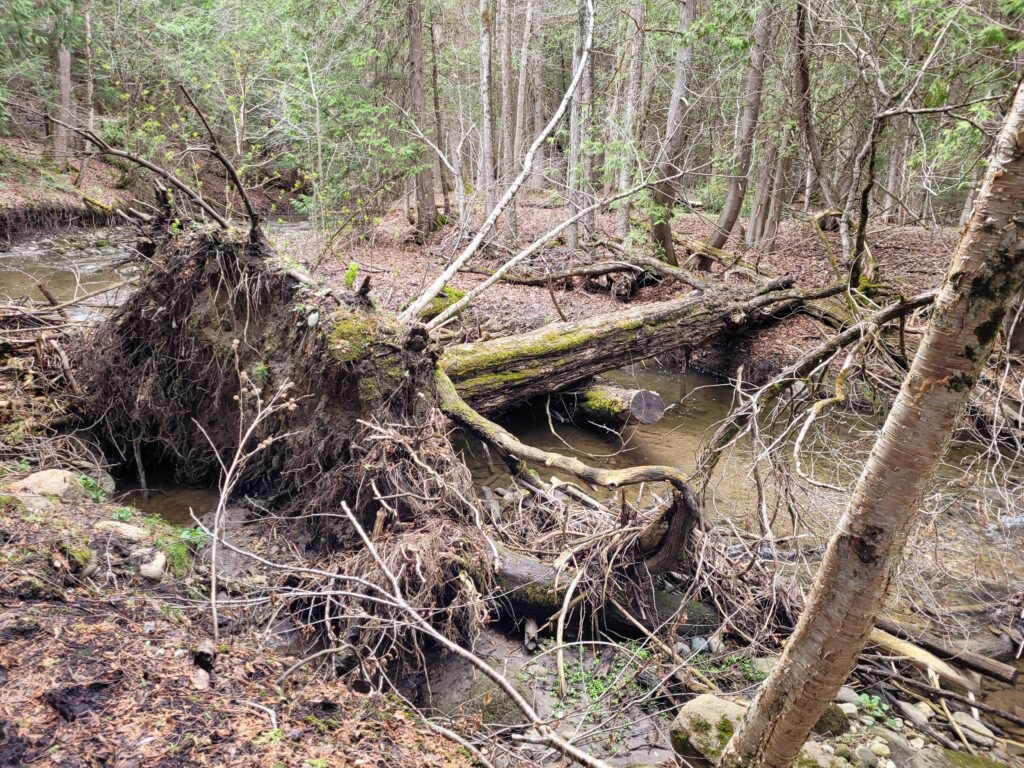
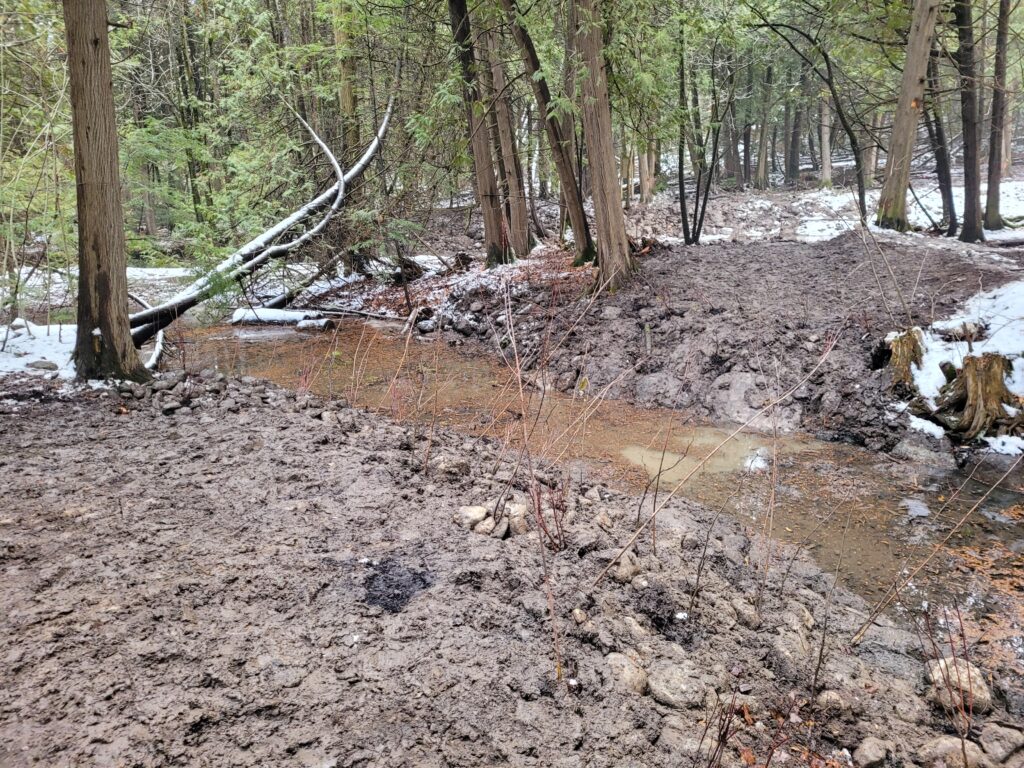
In 2021, the Restoration department hired a consultant to provide a design for some work required along Scanlon Creek. There were two areas of concern which needed some remediation work.
The first location was a low-level crossing area where there were three failing culverts at a creek crossing creating a fish barrier.
The second location was a roughly 50 metres section of severe bank erosion upstream of the original reservoir, along with a smaller intermittent bypass channel. Within this area of severe bank erosion, a large tree had fallen into the creek, which increased the overall erosion and acted as a dam to increasing local flooding. This site was also the home of two pedestrian bridges that were falling into disrepair.
In November of 2023, restoration work began at Scanlon Creek Conservation Area to address these issues. Our staff worked alongside a local contractor to implement the design and improve the overall functionality of the creek. By replacing the failing culverts with a larger concrete box culvert, this will reinstate fish passage in this section of the creek and allow for better conveyance during peak flow events. Additionally, by using bioengineering techniques (425 shrubs within a vegetated buttresses and large embedded root wads), it will enhance the biodiversity of the streambank and protect it against future flooding events.
3. Wash Water Treatment System
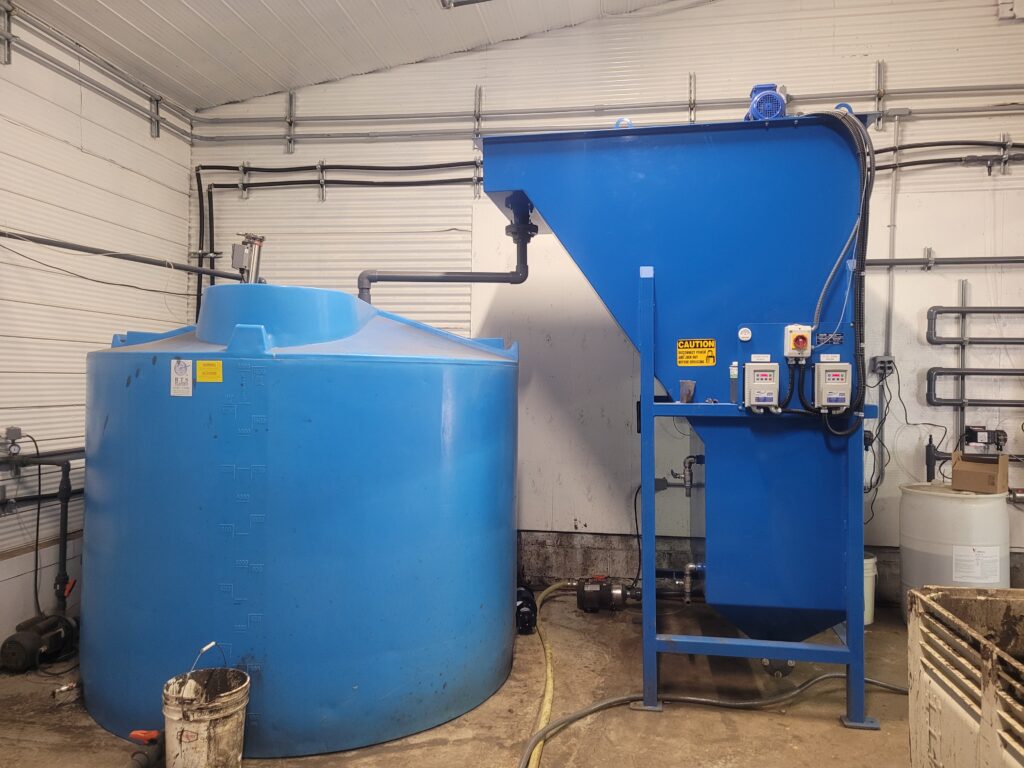
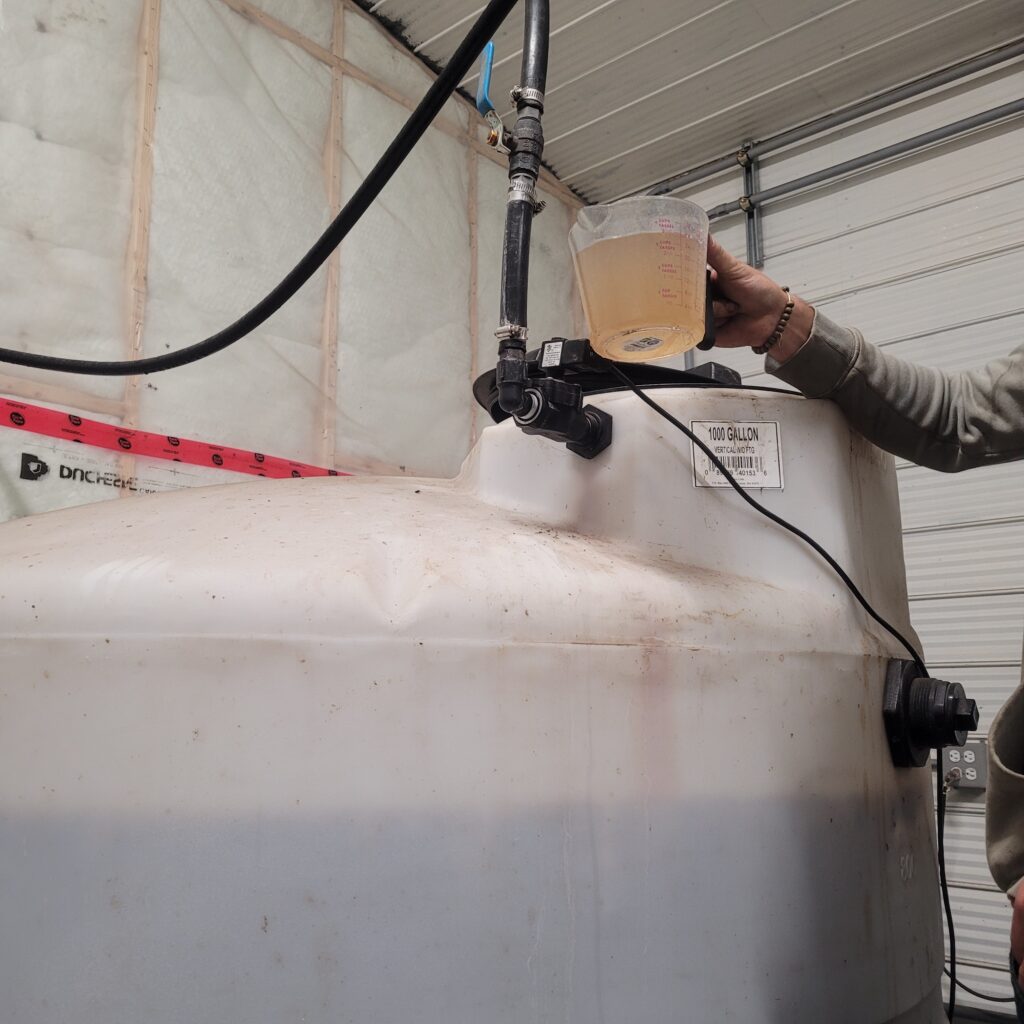
Karat King currently farms approximately 260 acres of muck soil in the Holland Marsh, in the Township of King. In 2019, they began the process of installing a closed loop wash water treatment system for their vegetable processing plant that was completed in the spring of 2021. The wash water was treated to a point where it could be reused at the beginning of the wash cycle. Any excess water went to a tank where it would be treated and polished and used for other purposes such as cleaning farm equipment.
In 2023 they wanted to improve the function of the system and how it handles muck soil. The system needed further treatment through the natural sedimentation of solids and this could be achieved with the installation of a settling pond. In the fall of 2023, they installed a new settling pond. to further enhance the efficiency and cleaning of the wash water treatment system.
Karat King washes over 50 acres of vegetables per year (approximately 10 million pounds of carrots) and this extensive system and upgrade will improve efficiencies and reduce the amount of water used in the vegetable washing processes by reusing the wash water in the system.
4. Western Creek
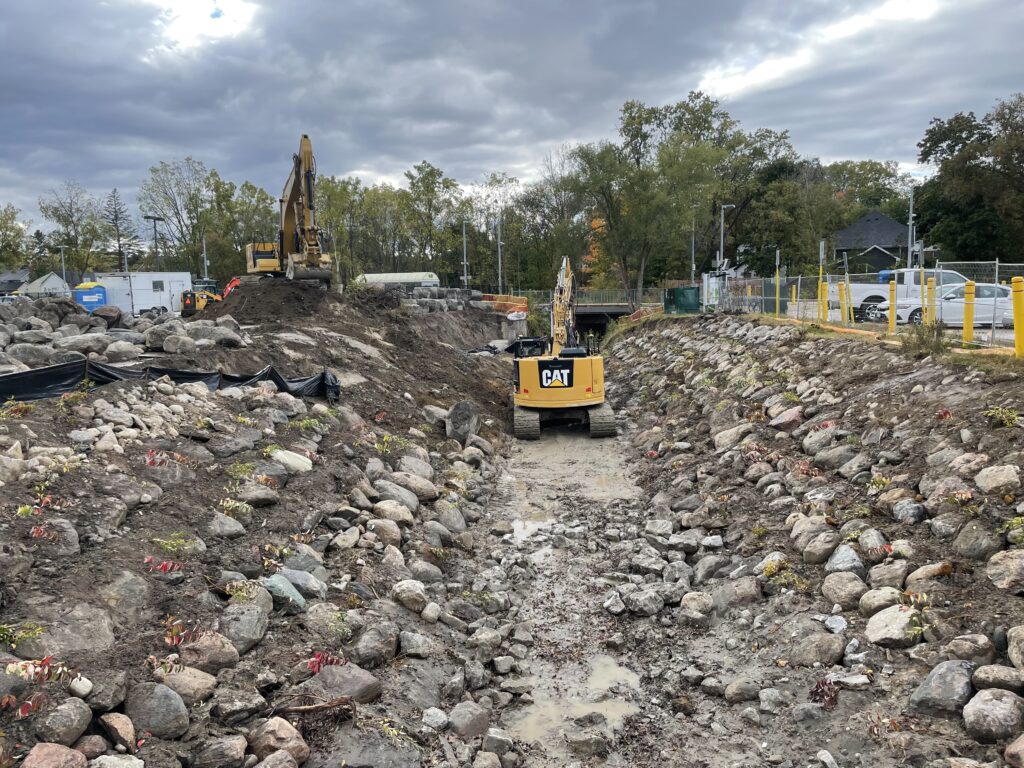
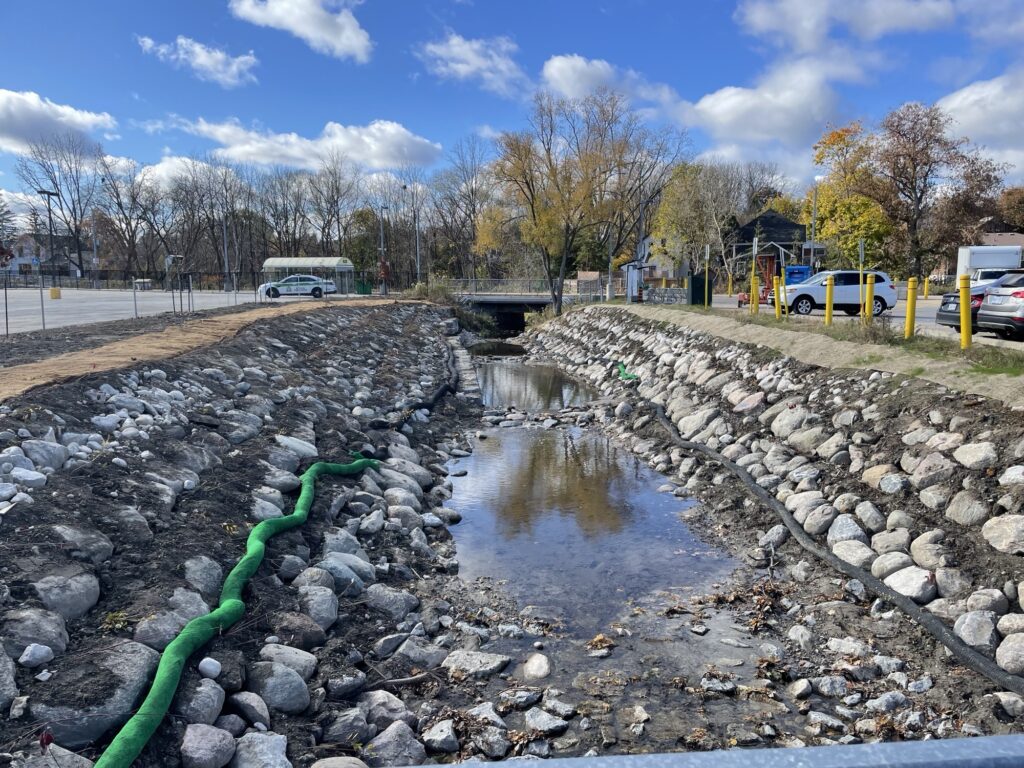
This project is located in the Town of Newmarket near the intersections of Davis Drive and Main Street. It included the restoration of 60 metres of Western Creek and infrastructure protection of York Region’s sanitary sewers that run parallel and underneath this section of creek. The restored creek channel now has a mixture of pools and riffles, as well as streambanks comprised of vegetated rock buttresses. Also, a total of 566 trees and shrubs were planted as part of the restoration. The construction cost was $681,000 that was funded through York Region’s Infrastructure Protection funding program, along with some in-kind works from the Town of Newmarket staff.
5. Murray Drive
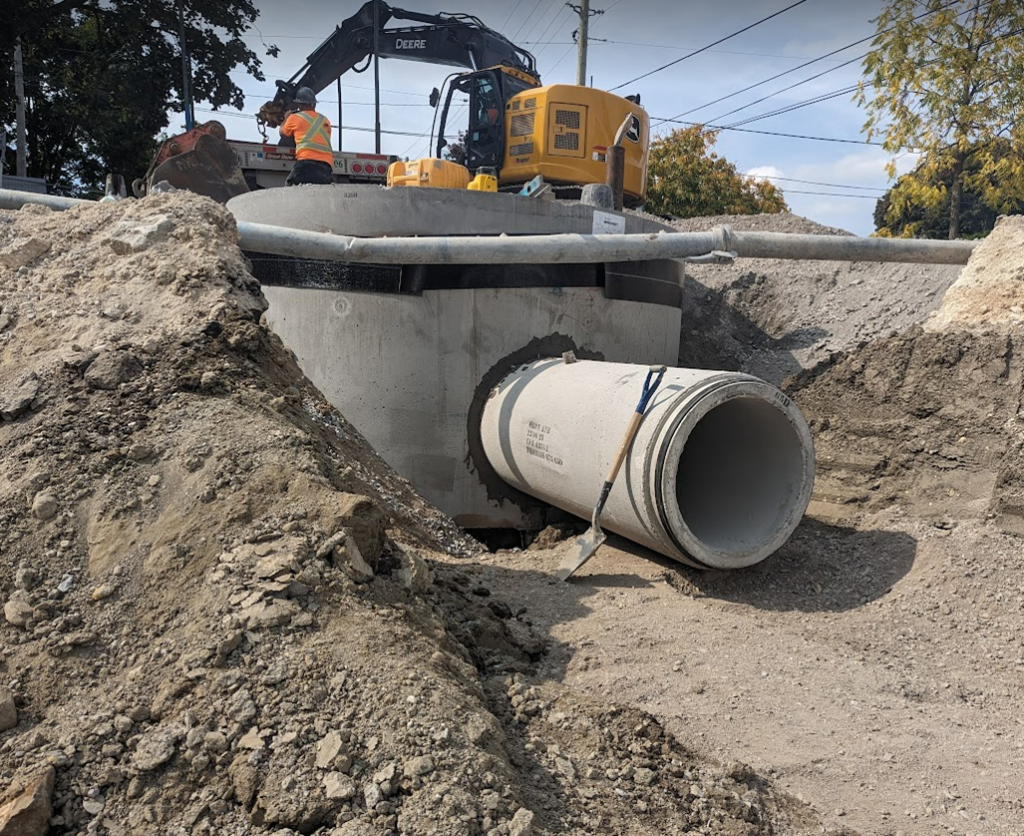
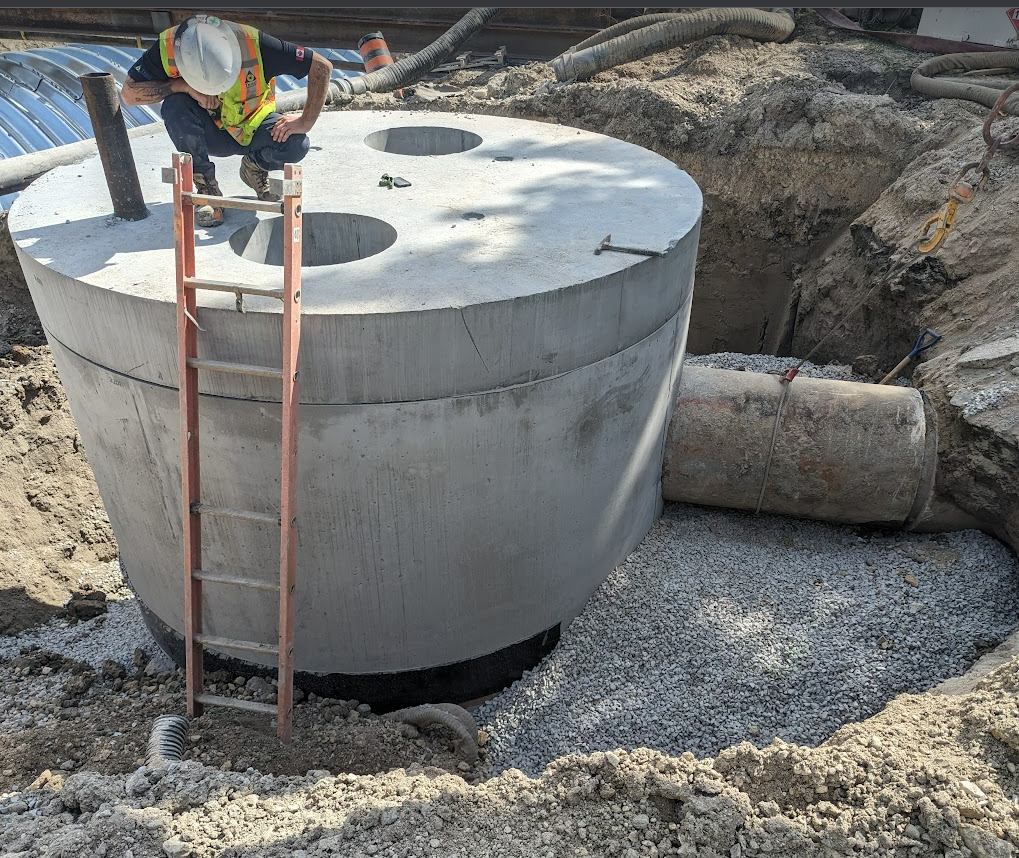
This project is located in an older urban residential section of Aurora near the intersections of Murray and Nisbet Drive. It will help improve localized stormwater by retrofitting this urban section of stormwater that previously flowed directly into the adjacent watercourse. This was achieved through the installation of an underground oil and grit separator that will capture nutrient enriched sediments before entering the creek, resulting in a reduction of 1.39 kg/year of additional phosphorus. The construction cost for this project was $275,000 and LSRCA was able to contribute $49,577 through the Phosphorus offsetting funding
6. Uxbridge Swale
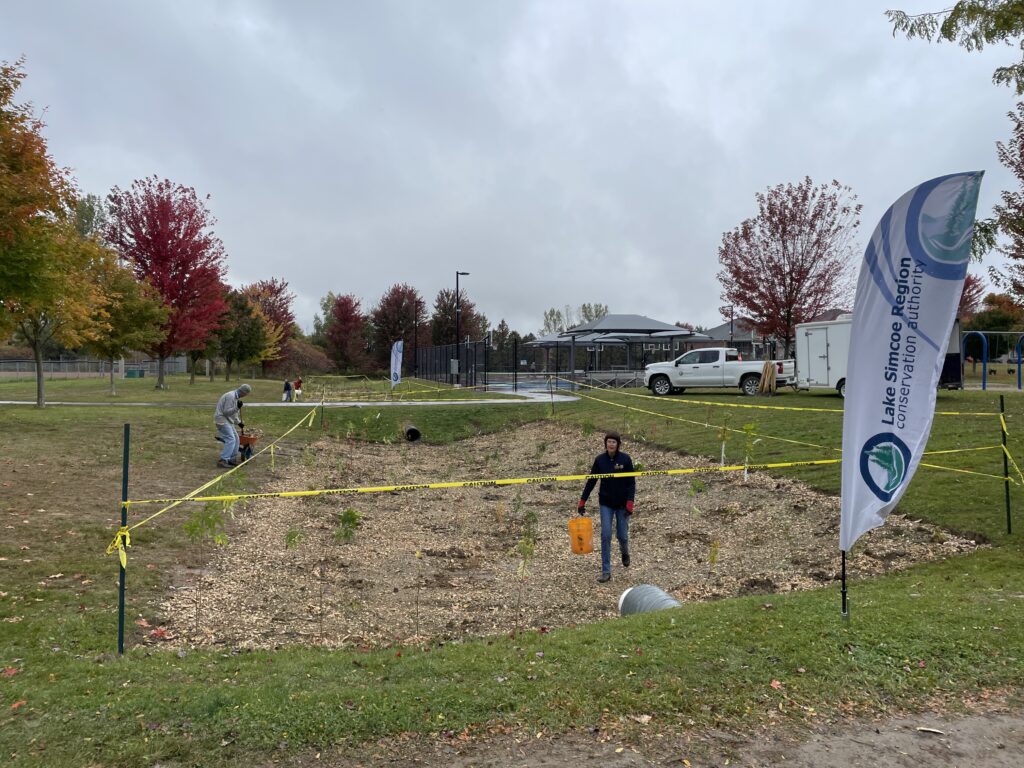
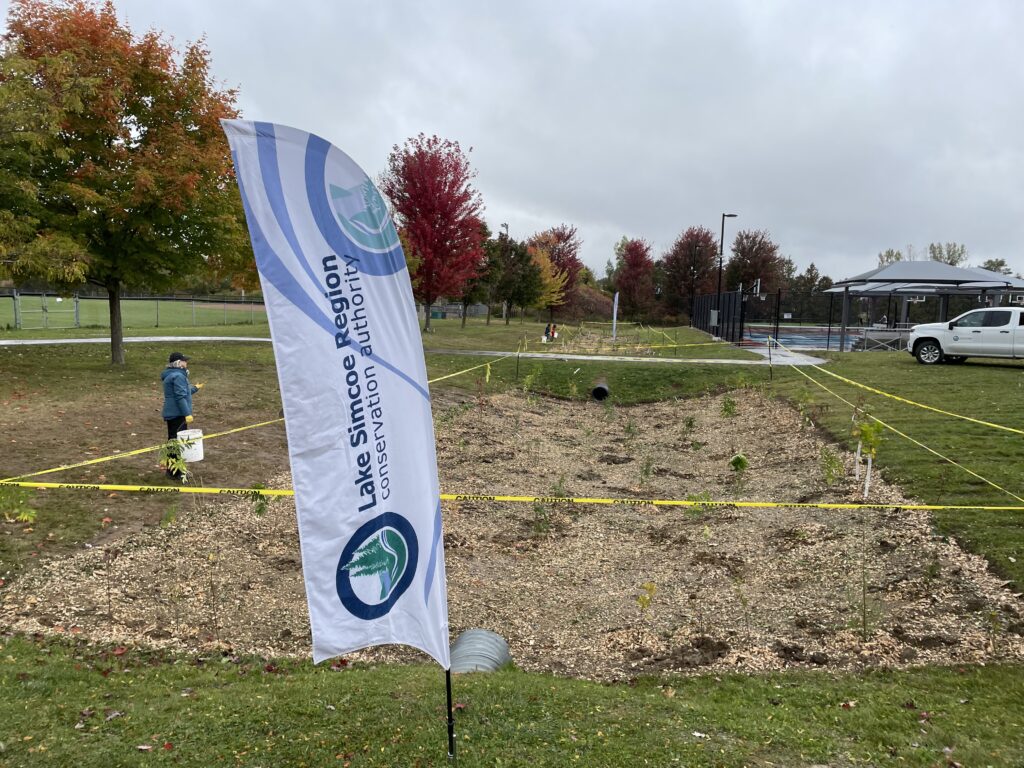
In partnership between the Rotary Club of Uxbridge, Town of Uxbridge and the Conservation Authority, a plan was developed and implemented to seed native grasses and wildflowers in the drainage swales at Bonner Fields, as well as plant 340 native shrubs alongside these areas. The primary objective of this project was to create a natural way to absorb excess moisture that collects in the swales. The swales were prepared by Township grounds crews, scraping the top layer of grass to expose the soil below. The Conservation Authority then helped select the native plants and shrubs appropriate for the location and sourced the native seed mix. On October 14, 2023, over 40 volunteers came together for a planting event to create the Rotary Bioswales.
Apart from community engagement, this project has many environmental benefits, including limiting erosion, and sequestering more carbon with an increased biodiversity of plants in the area. The native wildflowers will also encourage pollinators and provide habitat for an abundance of wildlife. Funding for the project was provided through the Conservation Authority’s Restoration Assistance Program, and Toronto Dominian Friends of the Environment Fund with in-kind support from the Town of Uxbridge.
7. Kawartha Tree Planting
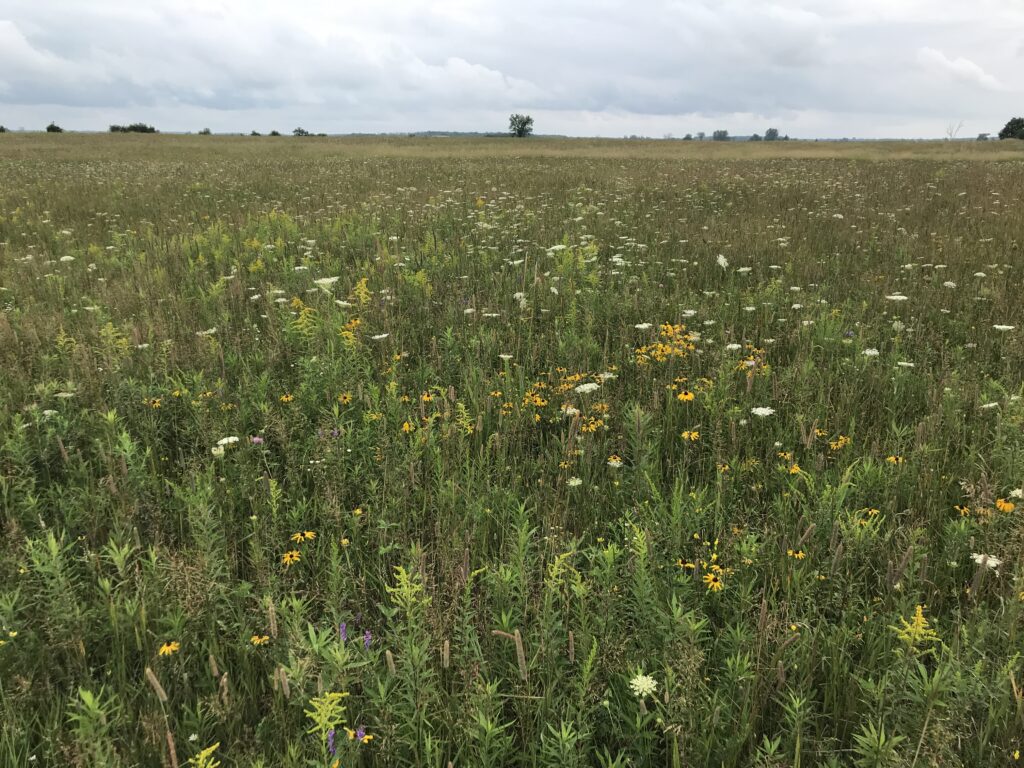
This project was part of ongoing restoration efforts on chemical-free agricultural land that the landowner is retiring. Several restoration projects have previously been completed on the property including 24 hectares of meadow enhancement, 38 hectares of cover crop, as well as tree plantings. The aim is to naturalize the property and enhance the existing natural heritage features by planting trees and creating and improving local grassland and wetlands. The tree planting project implemented in the spring of 2023 saw 12,000 native tree seedlings planted along the fence line of the property to help create a windbreak and extend existing tree cover. As this is part of an ongoing larger-scale project, 11,000 more trees and another 15 hectares of grassland are to be planted in 2024.
8. St. Jean de Brebeuf Tree Planting

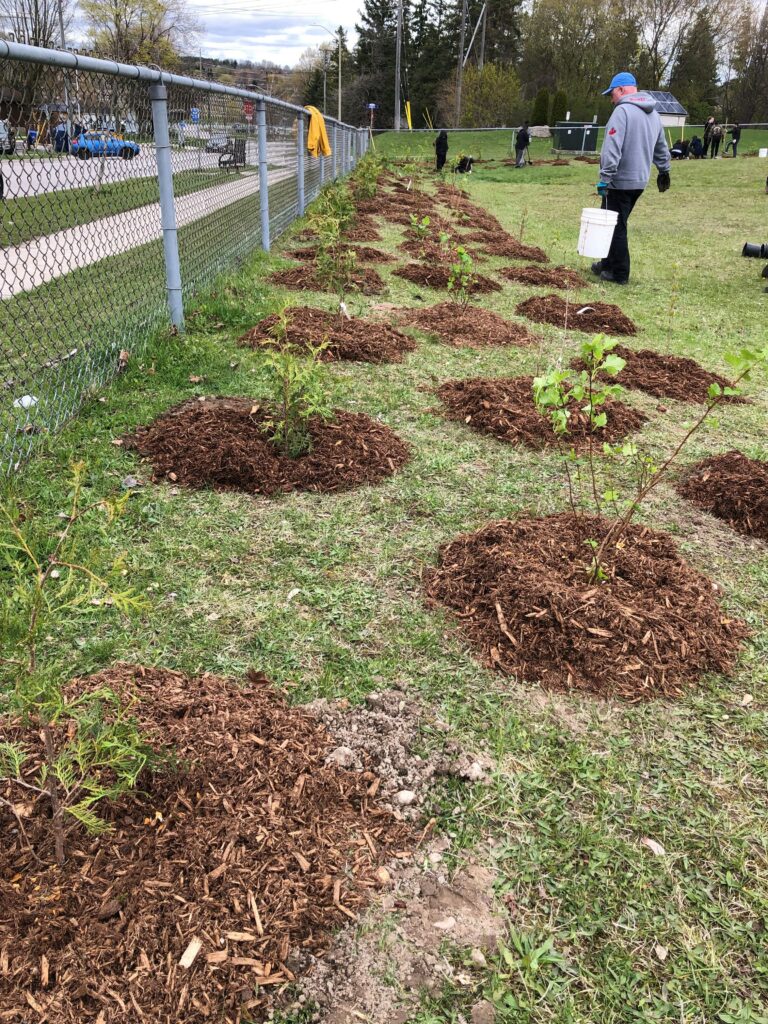
Through the Conservation Authority’s Community Action restoration funding category, students and staff at St. Jean Catholic Elementary School in Bradford organized a school-wide tree planting event last May to help kick-off Catholic Education week. Together the students planted 100 native trees and shrubs to create a windbreak along part of the fence line of the schoolyard, and to increase local biodiversity. As a special feature of the event, a member of the Chippewas of Georgina Island First Nation provided a lesson to the students about the importance of native plants and their role as traditional medicines, then then presented a drumming song to accompany the prayers offered up by the students as part of a smudging ceremony. The event was attended by members of the Simcoe Muskoka Catholic District School Board and was featured in an article in Bradford Today.
9. York Region Queensville Property
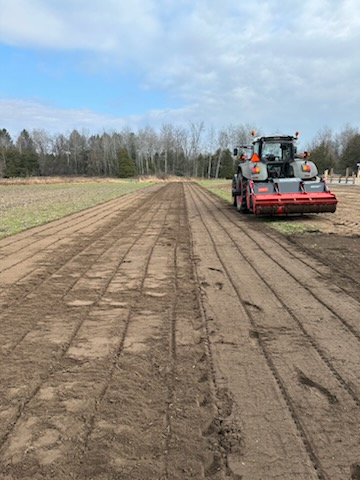
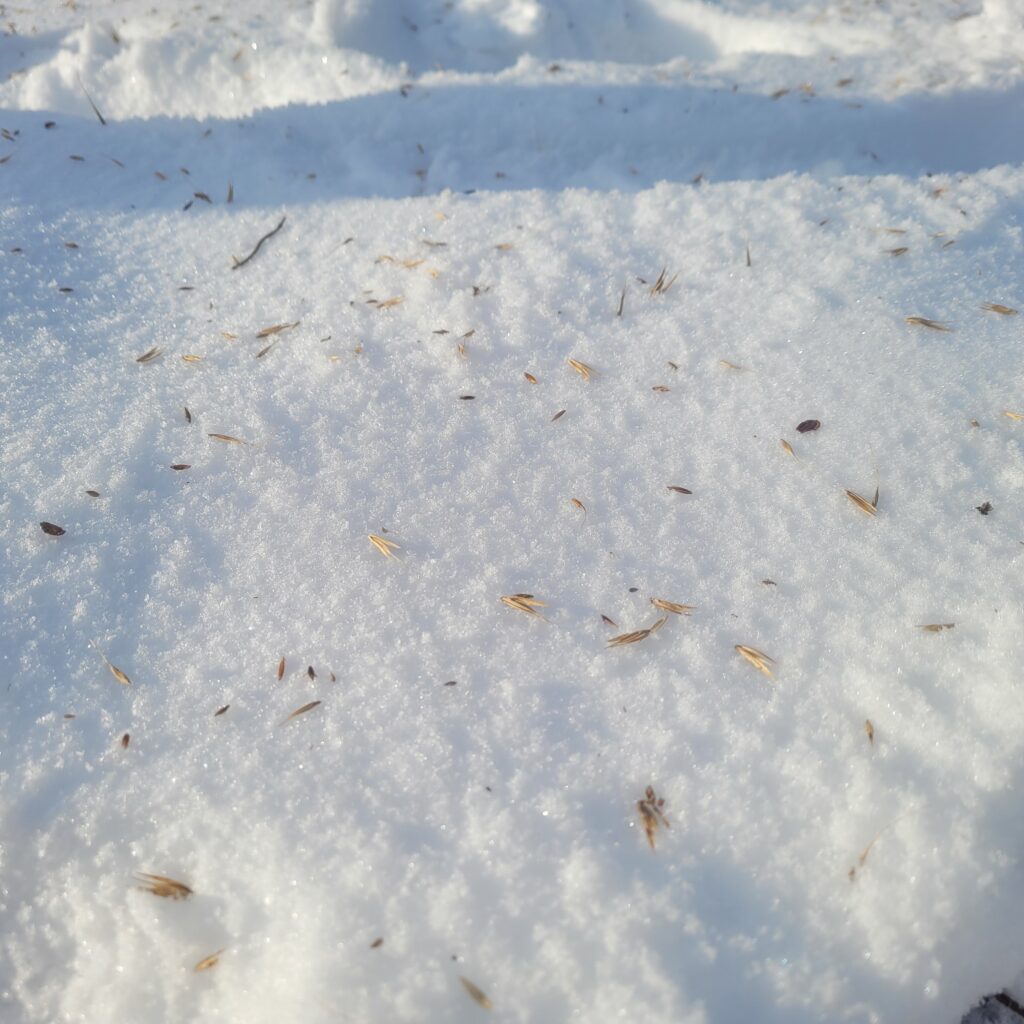
This 142 hectare property was purchased by the Regional Municipality of York in 2021 and is located at the corner of McCowan Road and Queensville Sideroad. The region plans to reforest 70 hectares of land on the property.
The Regional Municipality of York received funding support to purchase this land and for reforestation efforts by Infrastructure Canada through the Federal Disaster Mitigation and Adaption Fund. This funding supports tree planting and does not support other natural heritage feature enhancements. The Conservation Authority is working in partnership with York Region to enhance 2.43 hectares of land with native seed mixes and herbaceous plants in 2023 and 2024 with funding from our Ecological Offsetting Policy.
In the fall of 2023, the Conservation Authority seeded 1. 2 hectares of land with three different native seed mixes suited to the different site conditions. This area will be planted with native trees in the spring of 2024 and the seeded plants will continue to grow as the forest is established. Other wetland areas will be seeded and planted with native plants in 2024 by the Conservation Authority. This will enhance the wildlife habitat surrounding the wetland features and will help improve the native species diversity at the site.
10. Controlled Burn at Rogers Native Meadow Project
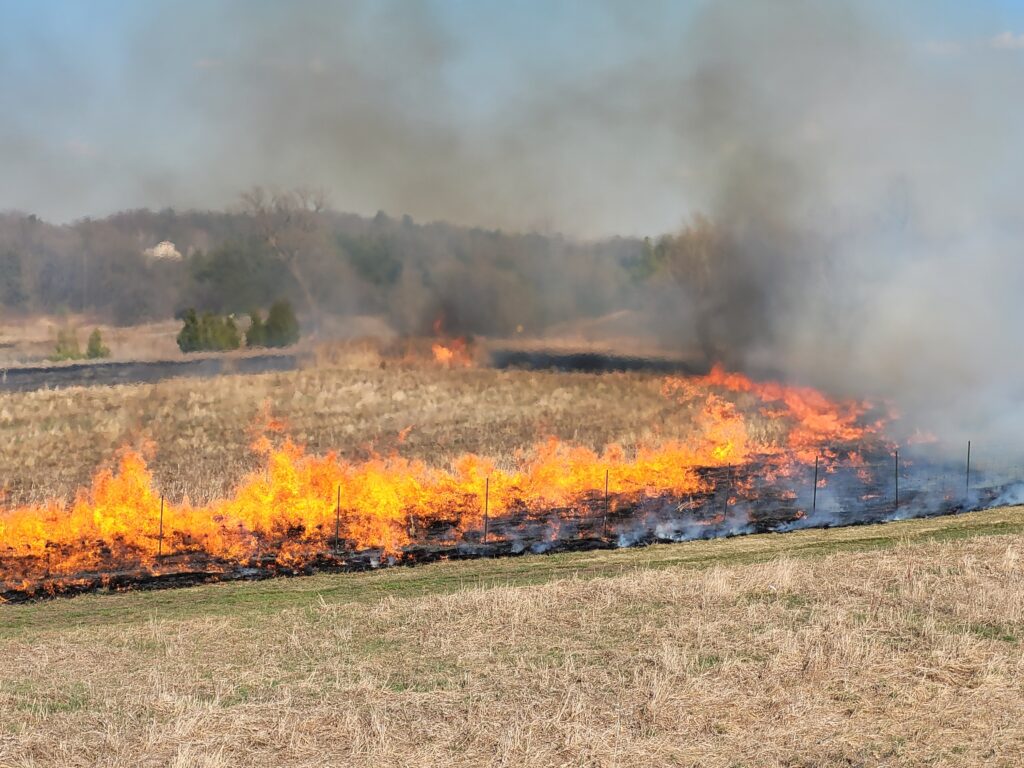
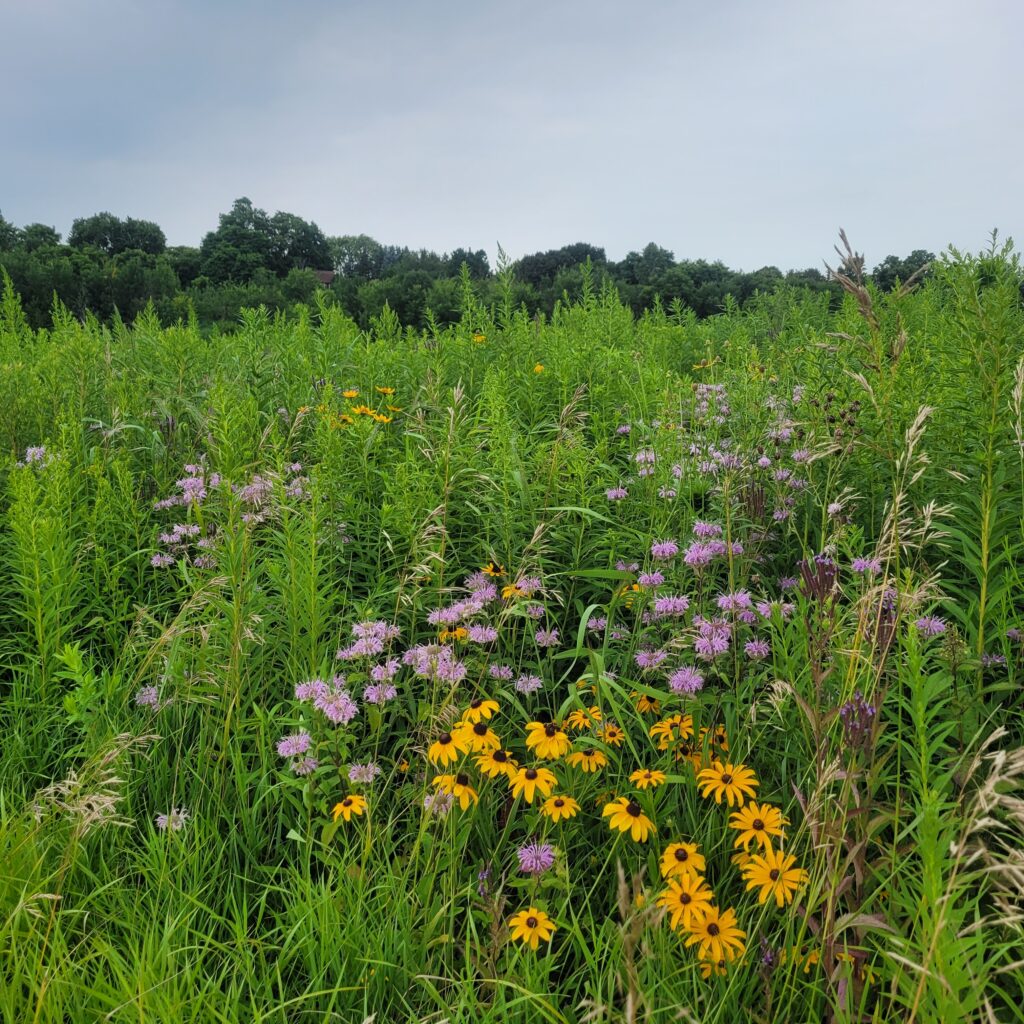
Mimicking natural disturbances through control methods is often required to establish a healthy grassland ecosystem. Two main disturbances that can be used are mowing at different intervals of the year and performing a controlled burn. A controlled burn is a deliberately set and carefully controlled low fire that consumes the previous year’s stems and leaves. These burns are an effective tool used to help manage and enhance grassland habitat. They can assist with the suppression of invasive species and further enhance the growing medium in the meadow by creating an ideal seedbed post-burn.
On April 12, 2023, we completed our first in-house burn at Rogers Reservoir Conservation Area at the Rogers Native Meadow Project site alongside our burn consultant. The burn was a great success and was completed in 2 hours! The burn was able to remove most of the previous year’s stems and all of the leaves at the site. The seedbed post burn is ideal for seeding which was also completed a week after the burn. The grassland contractor and Conservation Authority staff continued to monitor the site throughout the year and were pleased to see some of the native species thriving!
Contact Restoration:
Phone: 905-895-1281
Toll Free: 1-800-465-0437
Email:  restoration@LSRCA.on.ca
restoration@LSRCA.on.ca
